
Herring are various species of forage fish, mostly belonging to the family of Clupeidae.
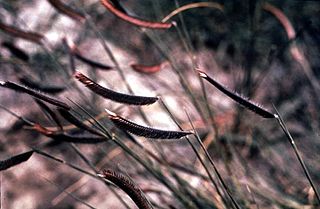
Bouteloua gracilis, the blue grama, is a long-lived, warm-season (C4) perennial grass, native to North America.
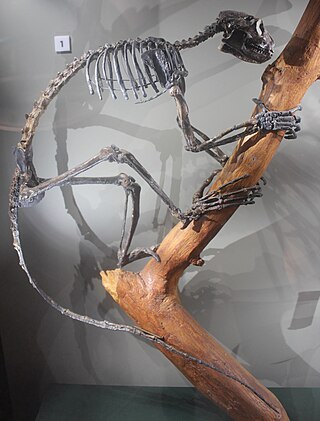
Smilodectes is a genus of adapiform primate that lived in North America during the middle Eocene. It possesses a post-orbital bar and grasping thumbs and toes. Smilodectes has a small cranium size and the foramen magnum was located at the back of the skull, on the occipital bone.

Rhagionidae or snipe flies are a small family of flies. They get their name from the similarity of their often prominent proboscis that looks like the beak of a snipe.
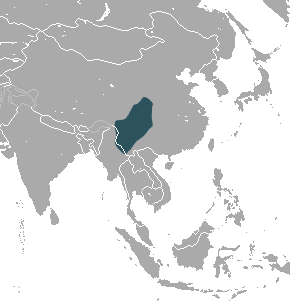
The gracile shrew mole is a species of mammal in the family Talpidae. It is endemic to China; populations known from Myanmar likely represent other species.
Dactylosaurus is a genus of nothosaur in the family Pachypleurosauridae. Along with Anarosaurus, Dactylosaurus was one of the earliest known pachypleurosaurs to come from Europe.

Rhagio is a worldwide genus of predatory snipe flies. Several species in this genus are referred to as downlooker or down-looker flies because they sometimes perch on tree trunks in a head-down position. There are approximately 170 species. They can be distinguished from other rhagionids by the open anal cell on the wings and the lack of a kidney-shaped arista.
Citrus gracilis, the Humpty Doo lime or Kakadu lime, is a straggly shrub endemic to eucalypt savannah woodlands of Northern Territory, Australia.

Hemaris gracilis, the slender clearwing or graceful clearwing, is a moth of the family Sphingidae. The species was first described by Augustus Radcliffe Grote and Coleman Townsend Robinson in 1865.

Rhagio scolopaceus is a species of fly from the family Rhagionidae. It is also known as the downlooker snipefly. It is the type species of the genus Rhagio.

Rhagio mystaceus, also known as the down-looker fly, downlooker snipefly and common snipe fly, is a species of fly from the family Rhagionidae.

Rhagio tringarius, common name marsh snipefly, is a species of fly from the family Rhagionidae.

Rhagio lineola is a species of 'snipe flies' belonging to the family Rhagionidae. It is a Palearctic species with a limited distribution in Europe.

Rhagio punctipennis, the lesser variegated snipe fly, is a species of snipe flies in the family Rhagionidae.

Nehalennia gracilis, the sphagnum sprite, is a species of narrow-winged damselfly in the family Coenagrionidae. It is found in North America.
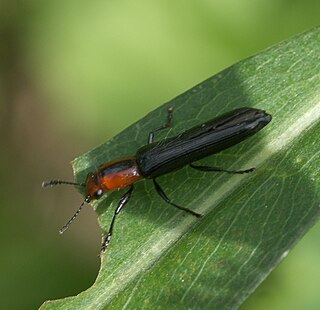
Acropteroxys is a genus of lizard beetles in the family Erotylidae. There are at least two described species in Acropteroxys.
Melanoplus gracilis, known generally as graceful grasshopper, is a species of spur-throated grasshopper in the family Acrididae. Other common names include the graceful spur-throat grasshopper and graceful narrow-winged locust. It is found in North America.
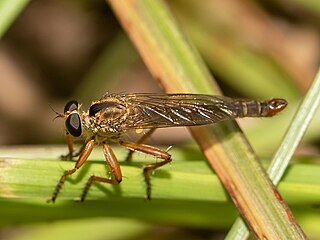
Polacantha gracilis is a species of robber fly in the family Asilidae.
Proctacanthus gracilis is a species of robber flies.












